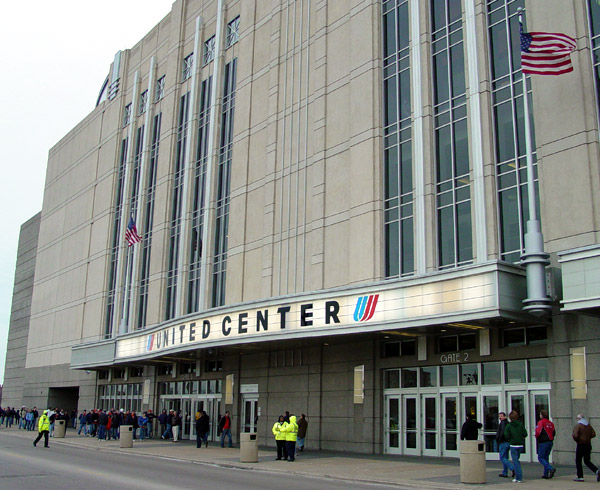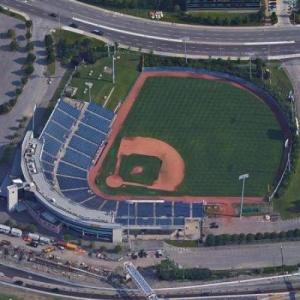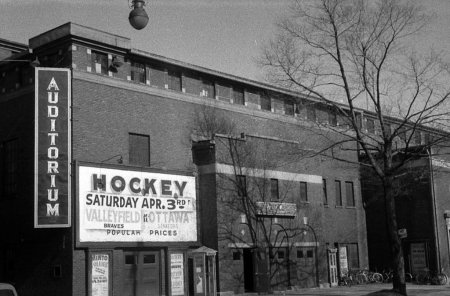On Saturday afternoon, December 14, the Army-Navy Game will be played at Lincoln Financial Field in Philadelphia. In college football, a sport so rife with at best tomfoolery and at worst corruption, this is the noblest day of the year.
It occurs to me that I'm posting this on December 7, the anniversary of the U.S. military's darkest day, the Japanese attack on the naval base at Pearl Harbor in Honolulu, Hawaii in 1941. The game has been played on the Pearl Harbor anniversary, in 1963 -- having been postponed from November 30, the weekend after President John F. Kennedy was assassinated. It was scheduled for December 7 in 1985, 1991, 1996 and 2002.
Starting in 1978, it was scheduled for the week after Thanksgiving weekend, usually the 1st Saturday in December, so it wouldn't conflict with any other major rivalries. But with the institution of conference championship games, starting in 2009, it's been moved to the 2nd Saturday in December. And it is nearly always played in Philadelphia.
Before You Go. Philadelphia is just down the road, so it's in the Eastern Time Zone, and you don't have to worry about fiddling with various timepieces. And the weather will be almost identical to what you'd have on the same day in New York. Still, check
the combined website for the Philadelphia newspapers, the
Inquirer and the
Daily News, before you head out.
For the moment, it looks like, for next Saturday, temperatures in Philly will be in the high 30s all day, with light snow predicted late, possibly during the game. That might make getting out difficult, especially if you drove in. There was an Army-Navy Game a few years ago played entirely in a snowfall.
Tickets. Yeah, right. This game always sells out. And the Army football website specifically says, "Army-Navy tickets cannot be purchased online."
So unless you know a guy -- or you know a guy who knows a guy -- you're watching this game, if at all, on TV. Maybe you can go to StubHub or somebody like that. At last check, StubHub's cheapest ticket for this game was $150, and Seatgeek had them for $160 and up.
Army's usual ticket prices: $95 on the sidelines, $40 in the end zones and in the upper deck. Navy's usual ticket prices: $45 for all seats.
Getting There. It's an even 100 miles from Times Square in Manhattan to Lincoln Financial Field in South Philadelphia. Too close to fly. If you are driving, you'll need to get on the New Jersey Turnpike. If you're not "doing the city," but just going to the game, take the Turnpike's Exit 3 to NJ Route 168, which forms part of the Black Horse Pike, to Interstate 295. (The Black Horse Pike later becomes NJ Route 42, US Route 322 and US Route 40, going into Atlantic City. Not to be confused with the White Horse Pike, US Route 30, which also terminates in A.C.)
Take I-295 to Exit 26, which will get you onto Interstate 76 and the Walt Whitman Bridge into Philly. Signs for the sports complex will soon follow, and the stadium is at 11th Street and Pattison Avenue (though the mailing address is "1 Lincoln Financial Field Way").
From anywhere in New York City, allow 2½ hours for the actual drive, though from North Jersey you might need only 2, and from Central Jersey an hour and a half might suffice. But you'll need at least another half-hour to negotiate the last mile or so, including the parking lot itself.
If you don't want to drive, there are other options, but the best one is the train. Philadelphia is too close to fly, just as flying from New York (from JFK, LaGuardia or Newark) to Boston, Baltimore and Washington, once you factor in fooling around with everything you gotta do at each airport, doesn't really save you much time compared to driving, the bus or the train.
And I strongly recommend
not taking the bus. If you do, once you see Philadelphia's Greyhound terminal, at 10th & Filbert Streets in Center City, the nation's 2nd-busiest behind New York's Port Authority Bus Terminal, you'll say to yourself, "I never thought I'd say this, but thank God for Port Authority!"
The Philly terminal is a disgrace. I don't know how many people are in Atlantic City on an average Summer day, when both the beaches and the casinos are full (I'm guessing about half a million, or 1/3rd the size of Philly), but it has a permanent population of 40,000 people, compared to the 1.6 million of Philadelphia, and it has a bus station of roughly equal size and far greater cleanliness than Philly's. Besides, Greyhound service out of Newark's Penn Station is very limited, and do you really want to go out of New Jersey into Manhattan just to get across New Jersey into Philadelphia?
If you can afford Amtrak, and that will be $110 round-trip between New York and Philly, it takes about 2 hours to get from Penn Station to the 30th Street Station at 30th & Market Streets, just across the Schuylkill River from Center City.
West front of 30th Street Station, with Center City in background
Unlike the dull post-1963 Penn Station, this building is an Art Deco masterpiece from 1933, and is the former corporate headquarters of the Pennsylvania Railroad. Ironically, it never had the official name "Pennsylvania Station" or the nickname "Penn Station." You might recognize its interior from the Eddie Murphy film
Trading Places. (If you can't afford Amtrak, or if you can but you'd rather save money, I'll get to what to do in a minute.)
Interior of 30th Street Station
If you do want to go for it, from 30th Street Station, you can take a cab that will go down I-76, the Schuylkill Expressway, to I-95, the Delaware Expressway, to South Broad Street to the Sports Complex. I would advise against this, though: When I did this for a Yankees-Phillies Interleague game at the Vet in 1999, it was $15. It's probably $30 now.
Instead, you'll need to take the subway, which, like Philly's commuter-rail and bus systems, is run by SEPTA, the SouthEastern Pennsylvania Transportation Authority. You might recognize their "S" logo from
Trading Places, and the bus that hits Tommy Morrison at the end of
Rocky V. You'll have to exit 30th Street Station and cross 30th Street itself to get into the 30th St. station on the Market-Frankford Line.
Philadelphia was the last American city to use tokens for their subway system, but, this year, phased them out in favor of a farecard. An all-day KeyCard will allow up to 8 rides, for $9.00. One ride on a SEPTA subway train is $2.50, cheaper than New York's.
One ride on a SEPTA subway train is $2.50, cheaper than New York's, but they don't sell single tokens at booths. They come in packs of 2, 5 and 10, and these packs are damn hard to open. Two cost $4.00; five are $10.00, and a ten-pack costs $20.00. They are also available for bulk purchase.
From 30th Street, take the Market-Frankford Line to 15th Street (that's just one stop), where you'll transfer to the Broad Street Line at City Hall Station. Being a Met fan, you'll notice that the MFL's standard color is blue, while the BSL's is orange. Blue and orange. Don't think that means they want to make Met, Knick or Islander fans feel at home, though.
From City Hall, if you're lucky, you'll get an express train that will make just 2 stops, Walnut-Locust and AT&T (formerly "Pattison" -- yes, they sold naming rights to one of their most important subway stations). But you'll want to save your luck for the game itself, so don't be too disappointed if you get a local, which will make 7 stops: Walnut-Locust, Lombard-South, Ellsworth-Federal, Tasker-Morris, Oregon, Snyder and AT&T. The local should take about 10 minutes, the express perhaps 7 minutes.
If you don't want to take Amtrak, your other rail option is local. At Newark Penn, you can buy a combined New Jersey Transit/SEPTA ticket to get to Center City Philadelphia. Take NJT's Northeast Corridor Line out of Penn Station to the Trenton Transit Center. This station recently completed a renovation that has already turned it from an absolute hole (it was so bad, it made Philly's bus station look like Grand Central) into a modern multimodal transport facility. At Trenton, transfer to the SEPTA commuter rail train that will terminate at Chestnut Hill East, and get off at Suburban Station, at 17th Street & John F. Kennedy Blvd. (which is what Filbert Street is called west of Broad Street). Getting off there, a pedestrian concourse will lead you to the City Hall station on the Broad Street Line, and then just take that to Pattison.
A SEPTA train at 30th Street Station
Because there will be a lot more stops than there are on Amtrak (especially the SEPTA part), it will take 2 hours and 10 minutes, but you'll spend $52 round-trip, about what you'd spend on a same-day purchase on Greyhound, and less than half of what you'd be likely to spend on Amtrak. However, again, time will be an issue: The last SEPTA Trenton Line train of the night that will connect to an NJT train leaves Suburban Station at 11:57 PM (and the NJT train it will connect to won't get to Penn Station until 2:46 AM), so this might not be an option for you this time, either.
The subway's cars are fairly recent, and don't rattle much, although they can be unpleasant on the way back from the game, especially if it's a football game and they're rammed with about 100 Eagles fans who've spent the game sweating and boozing and are still loaded for bear for anyone from outside the Delaware Valley.
As for the Academies: The U.S. Military Academy is in West Point, New York, 51 miles north of Midtown. By car, the best way is to take the West Side Highway to the George Washington Bridge into New Jersey, then the Palisades Interstate Parkway into New York State, until reaching U.S. Route 6. Take that east until you reach U.S. Route 9W, and take that north to N.Y. Route 218, the West Point Highway. It becomes Thayer Road. Turn left on Mills Road, which turns right. Soon, you will have Michie Stadium on your left, and the Lusk Reservoir on your right.
The U.S. Naval Academy is in Annapolis, Maryland, 216 miles southwest of Midtown. Take the Lincoln Tunnel to the New Jersey Turnpike, over the Delaware Memorial Bridge, to Interstate 95 South, across Delaware and into Maryland. When Interstate 895 splits off from I-95, and becomes the Harbor Tunnel Thruway, take that, to Interstate 97 South, all the way to its end at U.S. Route 50. Take that east, to Maryland Route 70 East, then make a right on Farragut Road. Navy-Marine Corps Memorial Stadium will be on your right.
If you do it right, getting to West Point should take about an hour and 15 minutes, no rest stop necessary; and getting to Annapolis should take 3 1/2 hours, maybe 4 1/2 if you make a rest stop halfway, at the rest area on the Delaware Turnpike.
Amtrak doesn't go to West Point or Annapolis. The Short Line bus service leaves Port Authority at 8:30 AM, arriving at West Point at 9:55; and leaves West Point at 5:07 PM, returning at 7:00. Round-trip fare is $32.80.
Greyhound doesn't cooperate for Navy: They have 1 bus a day leaving Port Authority for Annapolis, leaving at 9:00 AM, arriving in Baltimore at 12:40 PM, then you have to change buses to one leaving at 2:00, and arriving at 2:30. So a noon kickoff is already blown, and even a 3:30 kickoff might be problematic if the bus you're switching to comes in late. There won't be a bus back that night: You'd have to leave Annapolis at 11:45 AM on Sunday, arrive at Baltimore at 12:15 PM, change buses and leave at 12:45, getting back to New York at 4:25.
The fare is $142, but it can drop to $93 with advanced purchase. The station is at 308 Chinquapin Round Road, a mile and a half west of Navy's stadium.
Once In the City. Philadelphia is a Greek word meaning "brotherly love," a name given to it by its founder, William Penn, in 1683. So the city is nicknamed "The City of Brotherly Love." The actions and words of its sports fans suggest that this is ridiculous. Giants coach Bill Parcells was once caught on an NFL Films production, during a game with the Eagles at the Vet, saying to Lawrence Taylor, "You know, Lawrence, they call this 'the City of Brotherly Love,' but it's really a banana republic." And Emmitt Smith, who played for that other team Eagles fans love to hate, the Dallas Cowboys, also questioned the name: "They don't got no love for no brothers."
Center City, with the Ben Franklin Bridge in the foreground
On a map, it might look like Penn Square, surrounding City Hall, is the city's centerpoint, but this is just geographic, and only half-refers to addresses. Market Street is the difference between the north-south numbering on the numbered Streets. But the Delaware River is the start for the east-west streets, with Front Street taking the place of 1st Street. Broad Street, which intersects with Market at City Hall/Penn Square, takes the place of 14th Street.
The William Penn statue atop City Hall
In the Colonial and Revolutionary periods, Philadelphia was the largest city in America, before being overtaken by New York. As recently as 1970, it had about 2 million people. But "white flight" after the 1964 North Philadelphia riot led to the population dropping to just over 1.5 million in 2000. It has inched back upward since then. The metro area as a whole -- southeastern Pennsylvania, South Jersey and most of Delaware -- is about 7.2 million, making it the 7th-largest in the country, behind New York, Los Angeles, Chicago, San Francisco, Boston and Dallas.
The sales tax is 6 percent in the Commonwealth of Pennsylvania (Massachusetts, Virginia and Kentucky are also "commonwealths" in their official State names), 8 percent within the City of Philadelphia.
ZIP Codes in Philadelphia start with the digits 191. In the suburbs, it's 189, 190, 193 and 194. For much of the Lower Hudson Valley, it's 105 to 109, including West Point at 10996. For Annapolis, it's 214.
The Area Code for Philadelphia is 215, and the suburbs 610, with 267 overlaying both, and 445 being added in 2018. For the Lower Hudson Valley, it's 914, with 845 split off in 2000, including West Point. For Annapolis, it's 410, with 443 and 667 overlaid.
Philadelphia is about 42 percent black, 36 percent white, 13 percent Hispanic, and 7 percent Asian. North, Northwest and West Philadelphia are now almost entirely black, although University City (home to the University of Pennsylvania and Drexel University) and some of Southwest Philly remains white. South Philadelphia (Italian) and Northeast Philadelphia (Irish and Polish) remain mostly white.
The Philadelphia electric company is named just that: Philadelphia Electric Company, or PECO. And while it's not quite as close as it is to New York, much of the Jersey Shore is easily reachable from Philadelphia, thanks to Interstate 195, New Jersey Route 70, U.S. Routes 30 and 40, the Atlantic City Expressway, and New Jersey Transit's buses and its Atlantic City Rail Line. Point Pleasant Beach is 76 miles away, Seaside Heights 64 miles, Long Beach Island 62, Atlantic City 61, Ocean City 65, Wildwood 90, and Cape May 92.
Once At the Academy -- West Point. Both services trace their lineage back to 1775, in the War of the American Revolution. The Continental Congress passed resolutions establishing the Continental Army on June 14, and the Continental Navy on October 13.
On January 27, 1778, the Continental Army established a post at West Point, in the Town of Highlands, Orange County, New York, because its high ground over a bend in the Hudson River made it a good place to defend the City of New York from British attack from Canada. It was this that made it a target for betrayal by General Benedict Arnold when he turned coat in 1780, but the plot was exposed in time. Ironically, it was then known as Fort Arnold for his heroics upriver at Saratoga in 1777.
So it was renamed Fort Clinton, and it remains the oldest continuously occupied place in the U.S. Army. The United States Military Academy was established there on March 16, 1802, as various internal rebellions and the "Quasi-War" with France showed the federal government that the Founding Fathers' mistrust of a large standing army was no longer advisable. The administration building, seen in the background of this photo, is named Thayer Hall, after the Academy's founder, Brigadier General Sylvanus Thayer.
The Academy should not be confused with the Army War College, which (with some irony, and not just football-related) is on the grounds of the former Carlisle Indian School in Carlisle, Pennsylvania
There are about 4,300 Cadets and 600 academic staff. The student body is currently about 61 percent white, 18 percent Hispanic, 13 percent black, 5 percent Asian, 3 percent others; and 20 percent female. West Point graduates include, but are by no means limited to (listed here with their Class year):
* 1820s: Albert Johnston 1826, served in the Mexican-American War, then betrayed his country by becoming a Confederate General, killed at the Battle of Shiloh; Jefferson Davis 1828, served in the Mexican-American War, served Mississippi in both houses of Congress, Secretary of War, then betrayed his country by becoming the President of the Confederate States of America; Robert E. Lee 1829, served in the Mexican-American War, then betrayed his country by becoming a Confederate General.
* 1830s: George Meade 1835, won the Battle of Gettysburg; Edward Ord 1839, instrumental in the closing days of the American Civil War; Montgomery Blair 1835, served in the Mexican-American War, represented Dred Scott in his legal bid for freedom from slavery.
* 1840s: William Tecumseh Sherman 1840, conqueror of Georgia and the Carolinas; Ulysses S. Grant 1842, conqueror of Mississippi and Virginia, Secretary of War, 18th President of the United States 1869-77; Abner Doubleday 1842, a hero of the Battle of Gettysburg, but not the inventor of baseball, nor claimed to be; Winfield Scott Hancock 1844, a hero at Gettysburg, Democratic nominee for President in 1880; George McLellan 1846, disastrous 1st commander of U.S. forces in the Civil War, Democratic nominee for President in 1864; James Longstreet 1842, George Pickett 1846, and Thomas "Stonewall" Jackson 1846, all 3 served in the Mexican-American War, then betrayed their country by becoming Confederate Generals, Jackson being killed by "friendly fire" at the Battle of Chancellorsville.
* 1850s: Henry Slocum 1852, Union General, Congressman from New York, namesake of a tour boat that burned and killed over 1,000 people in the East River in 1904; Philip Sheridan 1853, Grant's adjutant in Virginia, later both a hero and a villain of the Indian Wars, credited with saying, "The only good Indian is a dead Indian"; John Bell Hood 1853, James Ewell Brown "Jeb" Stuart 1854, and Joseph Wheeler 1859, betrayed their country by becoming Confederate Generals. Stuart was killed in the Battle of Yellow Tavern. "Fighting Joe" Wheeler was a commander in the Western Theater, then restored his loyalty to the Union, served Alabama in Congress, and was welcomed back into the U.S. Army for the Spanish-American War, at one point forgetting what war he was in, telling his men, "Come on, boys, we've got the damn Yankees on the run!" He was 62, but survived the war.
* 1860s: Adelbert Ames 1861, Medal of Honor for the First Battle of Bull Run, Governor and Senator from Mississippi; Henry du Pont 1861, Medal of Honor for Battle of Cedar Creek, Senator from Delaware; George Armstrong Custer 1861, a hero at Gettysburg, decidedly unheroic in the Indian Wars thereafter, killed at the Battle of Little Bighorn in 1876.
* 1870s: Tasker Bliss 1875, General in Spanish-American War, Army Chief of Staff in World War I; Henry O. Flipper 1877, the 1st black graduate, served in the Indian Wars.
* 1880s: George Goethals 1880, designed and built the Panama Canal; John J. Pershing 1886, commanding General in World War I.
* 1900s: Hugh S. Johnson 1903, World War I quartermaster general, led President Franklin Roosevelt's National Recovery Administration, and was named
Time magazine's Man of the Year in 1933; Douglas MacArthur 1903, decorated in World War I, Medal of Honor for commanding the evacuation of Bataan in World War II, 1st commander of U.S. forces in Korean War; George S. Patton 1906, hero of World War I, General of World War II; Henry "Hap" Arnold 1907, commander of the U.S. Army Air Force in World War II, 1st commander of the U.S. Air Force and its only 5-star General; George S. Patton 1909, served in World War I, commander of the 7th, 3rd and 15th U.S. Army in World War II, namesake of the Academy Award winner for Best Picture of 1970.
* 1910s: Carl Spaatz 1914, 1st Chief of Staff of the U.S. Air Force; Omar Bradley 1915, commanded 1st Army in WWII, Chairman of the Joint Chiefs of Staff 1949-53; Luis Esteves 1915, 1st Hispanic graduate, commanded troops in both World Wars, founded the Puerto Rico National Guard; Dwight D. Eisenhower 1915, Supreme Allied Commander in World War II, President of Columbia University 1948-50, 34th President of the U.S. 1953-61; Bob Neyland 1916, longtime football coach at the University of Tennessee, their stadium is named for him; Matthew Ridgway 1917, commanded 82nd Airborne in WWII, commanded UN troops in Korea in 1951 and '52, Supreme Commander of NATO 1952-53; Mark Clark 1917, commanded UN troops in Korea in 1952 and '53; Norman Schwarzkopf Sr. 1918, director of New Jersey State Police, father of later General "Stormin' Norman"; Leslie Groves 1918, directed the Manhattan Project to build the atomic bomb; Lucius Clay 1918, ran the Berlin Airlift 1948-49; Anthony McAuliffe 1919, famously answered a Nazi call for surrender at the Battle of the Bulge with one word, "Nuts!"; Nathan Twining 1919, helped turn the Army Air Force into the separate Air Force, 1st General from that branch to serve as Chairman of the Joint Chiefs of Staff, 1957-60.
The Class of 1915 is known as "The Class the Stars Fell On," because 59 out of 164 graduates, 36 percent, eventually became Generals, led by 5-star Generals Eisenhower and Bradley.
* 1920s: Lyman Lemnitzer 1920, Chairman of the Joint Chiefs of Staff 1960-62, Supreme Commander of NATO 1963-69; Maxwell Taylor 1920, commanded 101st Airborne in WWII, Chairman of the Joint Chiefs of Staff 1962-64; Earl Blaik 1920, longtime Army football coach, more about him later.
* 1930s: Earle Wheeler '32, commanded units in WWII and Korea, Chairman of the Joint Chiefs of Staff 1964-70; William Westmoreland '36, served in WWII and Korea, commanded U.S. troops in Vietnam 1964-68; Creighton Abrams '36, served in WWII and Korea, commanded U.S. troops in Vietnam 1968-72, namesake of the M1 Abrams Tank; Benjamin O. Davis Jr. '36, commander of the Tuskegee Airmen, 1st black 4-star General, son of the 1st black Army General; Andrew Goodpaster '39, Supreme Commander of NATO 1969-74.
* 1940s: George S. Brown '41, Air Force, Chairman of the Joint Chiefs of Staff 1974-78; Bernard Rogers '43, Supreme Commander of NATO 1979-87; John Eisenhower '44, Ike's son, U.S. Ambassador to Belgium 1969-71, military historian; Warren Hearnes '46, Governor of Missouri 1965-73, University of Missouri's arena is named for him; Anastasio Somoza '46, President of Nicaragua 1967-72 and 1974-79; Alexander Haig '47, served in Korea, brigade commander in Vietnam, White House Chief of Staff to Presidents Nixon and Ford, Supreme Commander of NATO 1974-79, Secretary of State to President Reagan 1981-82; Brent Scowcroft '47, National Security Advsier 1975-77 and again 1989-93.
* 1950s: Frank Borman '50, commanded
Apollo 8; Edwin "Buzz" Aldrin '51, lunar module pilot on
Apollo 11 and 2nd man to walk on the Moon; Fidel Ramos '50, President of the Philippines 1992-98; Ed White '52, made 1st U.S. spacewalk on
Gemini 4; Michael Collins '52, command module pilot on
Apollo 11; John Galvin '54, Supreme Commander of NATO 1987-92; Norman Schwarzkopf Jr. '56, commanded coalition troops in Persian Gulf War.
* 1960s: George Joulwan '61, Supreme Commander of NATO 1993-97; Barry McCaffrey '64, Bronze Star in Vietnam, unit commander in Persian Gulf War, Director of the Office of National Drug Control Policy 1996-2001; Eric Shinseki '65, 3 Bronze Stars in Vietnam, 1st Asian-American 4-star General, Secretary of Veterans Affairs 2009-14; Wesley Clark '66 (valedictorian), served in Vietnam, unit commander in Persian Gulf War, Supreme Commander of NATO 1997-2000; Roy Moore '69, Chief Justice of the Alabama Supreme Court 2001-03 and 2013-17, bid for U.S. Senate lost due to sex scandal.
* 1970s: Jack Reed '71, current Senator from Rhode Island; David Petraeus '74, commanded U.S. forces in Afghanistan 2007-10, CIA Director 2011-12; Martin Dempsey '74, Chairman of the Joint Chiefs of Staff 2011-15; Stanley McChrystal '76, commanded U.S. troops in Iraq 2003-08; Jose Maria Figueres '79, President of Costa Rica 1994-98.
* 1980s: H.R. McMaster '84, unit commander in Iraq War, National Security Adviser 2017-18; Mike Pompeo '86, CIA Director 2017-18, now U.S. Secretary of State; Mark Esper '86, current U.S. Secretary of Defense; John Bel Edwards '88, current Governor of Louisiana.
Once At the Academy -- Annapolis. Like the County in which it sits, Annapolis, the capital of the State of Maryland, was named for Anne Arundell (the County's name drops the 2nd L), Lady Baltimore, wife of Cecil Calvert, 2nd Baron Baltimore, who founded the Maryland Colony. (Her father was also a Baron.) The city was founded in 1649, and is now home to about 39,000 people, about 55 percent white, 26 percent black, 17 percent Hispanic and 2 percent Asian.
The Maryland State House
The United States Naval Academy was founded on October 10, 1845, and produces officers for both the U.S. Navy and the U.S. Marine Corps. The Air Force, the Coast Guard and the Merchant Marine have separate academies, but the Marines do not. The Academy should not be confused with the Naval War College in Newport, Rhode Island.
Currently, the Academy has 4,576 Midshipmen, of whom 64 percent are white, 17 percent Hispanic, 12 percent black and 7 percent Asian. Women were first admitted in 1975, and now make up 28 percent of the students. Presuming they graduate, they will receive commissions as Ensigns in the Navy or 2nd Lieutenants in the Marines. Notable graduates include:
19th Century: George Dewey 1858, Admiral in the Spanish-American War, winner of the Battle of Manila Bay without losing a man;John A. Lejeune 1888, 3-star General in World War I, Commandant of the Marine Corps 1920-29, Marine training center Camp Lejeune in North Carolina is named for him; William D. Leahy 1897, 1st Fleet Admiral (5-star Admiral), during World War II.
1900s: Ernest King 1901, Fleet Admiral in World War II; William Halsey 1904, also Fleet Admiral in World War II; Chester Nimitz 1905, another Fleet Admiral in World War II; John McCain Sr. 1906, Admiral in World War II and founder of an Annapolis dynasty.
1910s: Richard Byrd 1912, Admiral, Arctic and Antarctic explorer; Arthur W. Radford 1916, Admiral, Chairman of the Joint Chiefs of Staff 1953-57.
1920s: Charles McVay 1920, Captain of the ill-fated USS
Indianapolis; Hyman Rickover '22, submarine Admiral, "Father of the Nuclear Navy"; Robert A. Heinlein '29, science fiction pioneer.
1930s: John McCain Jr. '31, commanded the U.S. Pacific Command while his son was a prisoner of war; Thomas H. Moorer '33, Admiral, Chairman of the Joint Chiefs of Staff 1970-74; William Lederer '36, co-author of
The Ugly American; Edward Beach '39, author of the submarine warfare novel
Run Silent, Run Deep.
1940s: John McMullen '40, engineer, former owner of the NHL's New Jersey Devils and MLB's Houston Astros, the Academy's hockey arena is named for him; Alan Shepard '45, 1st American in space aboard
Freedom 7, commanded
Apollo 14 and walked on the Moon; Walter Schirra '46, only man to fly in Projects Mercury, Gemini and Apollo; Jimmy Carter '47, 39th President of the United States, 1977-81; Jeremiah Denton '47, prisoner of war in Vietnam, Senator from Alabama; William Crowe '47, Admiral, Chairman of the Joint Chiefs of Staff 1985-89.
1950s: James Irwin '51, lunar module pilot on
Apollo 15, walked on the Moon; Jim Lovell '52, flew on
Apollo 8 and commanded
Apollo 13; Ross Perot '53, computer mogul, heavily involved in getting some Vietnam War prisoners released, 3rd party candidate for President in 1992 and 1996; William Anders '55, also flew on
Apollo 8; Politics: Charles Wilson '56, Congressman from Texas involved in Afghanistan, namesake of book and film
Charlie Wilson's War; John McCain III '58, pilot in the Vietnam War, America's most famous prisoner of war, longtime Senator from Arizona, Republican nominee for President in 2008; John Poindexter '58, National Security Advisor 1985-86, convicted in Iran-Contra; Robert "Bud" McFarlane '59, National Security Advisor 1983-85, also convicted in Iran-Contra.
1960s: Peter Pace '67, Marine General, Chairman of the Joint Chiefs of Staff 2005-07; Oliver North '68, Marine veteran of Vietnam, aide to President Reagan, convicted in Iran-Contra scandal, right-wing radio and talk show host; Michael Mullen '68, Admiral, Chairman of the Joint Chiefs of Staff 2007-11; Jim Webb '68, former Senator from Virginia.
1980s: Montel Williams '80, actor and talk show host; Alan Hale '80, astronomer known for his discovery of comets.
2000s: John S. McCain IV '09, known as Jack like his grandfather.
There seem to be more notable Annapolis graduates in fiction than West Point graduates. These include Steve McGarrett of
Hawaii Five-O (1941 in the original version, 1997 in the new version), Thomas Magnum of
Magnum, P.I. (1967), Jack Ryan in Tom Clancy's novels (1972 in
The Hunt for Red October, probably moved up for the current TV series), President Matthew Santos of
The West Wing (1982), and Harmon Rabb of
JAG (1985).
Going In. Philly sports fans' reputation will not come into play for the Army-Navy Game. This may be the most respectful sports crowd you will ever be in. Why Philadelphia? Because it's roughly halfway between the academies: 146 miles from West Point, and 122 miles from Annapolis. This will be the 120th Game, and the 89th played in Philadelphia.
The Philadelphia sports complex is at Broad Street and Pattison Avenue, 36 blocks -- 7 miles -- south of City Hall. It once included Sesquicentennial/Municipal/John F. Kennedy Stadium (1926-1992), The Spectrum (1967-2009), and Veterans Stadium (1971-2004). The arena now known as the Wells Fargo Center was built on the site of JFK Stadium. Citizens Bank Park, the new home of the Phillies, was built to the east of The Vet. And Lincoln Financial Field was built south of the new ballpark, and east of the Spectrum.
The old version of the Philly sports complex, on a 1980s postcard.
Top to bottom: The Vet, The Spectrum, JFK Stadium.
JFK Stadium hosted the Game from 1936 to 1941, and again from 1945 to 1979, at which point its condition was judged to have deteriorated too much to host it. Veterans Stadium hosted from 1980 to 2001, except for 1983, 1989, 1993, 1997 and 2000. Lincoln Financial Field, named for the insurance and investment company that owns the naming rights, has been the regular host since it opened in 2003.
There is plenty of parking in the complex, including a lot on the site of The Vet. But you'll be a lot better off if you take the subway. Not really because of the price of parking ($45 for Army-Navy), but because traffic is going to be awful.
The first time I went to a sporting event in Philadelphia, it was a 4th of July celebration at the Vet, and 58,000 people showed up to see the Phils face the Houston Astros, with Nolan Ryan pitching. The game and the fireworks combined did not last as long as it took to get out of the parking lot and onto the Walt Whitman Bridge: 2 hours and 40 minutes. Trust me: Take the freakin' subway.
Coming out of the AT&T subway station, you'll walk down Pattison Avenue, with a parking lot on the former site of Veterans Stadium to your left, and the site of the Spectrum to your right. Further to your right is the successor to the Spectrum, the Wells Fargo Center, named for the banking and insurance company. Further to your right is Lincoln Financial Field. You'll be likely to enter either at the north end zone or the west sideline.
The Philly sports complex, prior to The Spectrum's demolition in 2010.
The site of the Vet is now a parking lot, and JFK Stadium has been replaced
by the Wells Fargo Center. On the right, Citizens Bank Park and Lincoln Financial Field.
The new home of the Eagles has seen them make the Playoffs more often than not, and reach the Super Bowl in the 2004 and 2017 seasons, winning the latter. And fan behavior, while still rowdy, is not as criminal as it was at The Vet: No more municipal court under the stands is necessary.
"The Linc" has hosted 4 games of the U.S. National Soccer Team, games of the 2003 Women's World Cup, an MLS All-Star Game, and several games by touring European teams such as Manchester United, Glasgow Celtic and A.C. Milan. It hosted an NHL Stadium Series game between the Pennsylvania teams, the Philadelphia Flyers and the Pittsburgh Penguins, in 2019. It has been selected by the U.S. Soccer Federation as a finalist to be one of the host venues for the 2026 World Cup.Midshipmen on the field, before marching into the stands.
The stadium looks a lot taller from the inside,
because the field is well below street level.
Inside the stadium, concourses are wide and well-lit, a big departure from The Vet. Escalators are safe and nearly always work, as opposed to the Vet, which did not have escalators, only seemingly-endless ramps. Getting to your seat should be easy. The field is natural grass, and aligned north-to-south.
Army football began on The Plain, the parade field at the Academy, about a mile northeast of Michie Stadium. It hosted the 1st Army-Navy Game, a 24-0 Navy win on November 29, 1890; and the 3rd, a 12-4 Navy win on November 26, 1892.
This was the site of 2 of the defining games of early college football, both upsets of Army: By the Carlisle Indian School, coached by Pop Warner and led by Jim Thorpe, 27-6 on November 9, 1912; and by Notre Dame, effectively introducing the forward pass to football, with Gus Dorais passing to end and future coach Knute Rockne, resulting in a 35-13 win on November 1, 1913. Before that, Notre Dame was just another small Catholic university in the Midwest; after it, it was legend.
The Plain! The Plain!
(Do not make that joke if you visit.)
The official address for Michie Stadium is 700 Mills Road. Parking is $25. It was named for Captain Dennis Michie, who organized the 1st Army football team in 1890, and was killed in the Spanish-American War in 1898. Its 1st game was a 17-0 Army win over St. Louis University on October 4, 1924.
It seats 38,000, sits on Lusk Reservoir, with the Hudson River in view to the east, surrounded by trees, giving it, especially with the leaves changing in mid-season, one of the greatest settings in college football.
The playing surface, which runs north-to-south, and has sadly been artificial turf since 1977 (FieldTurf since 2008), has been named Red Blaik Field since 1999, in memory of the man who coached Army to the 1944, '45 and '46 National Championships.
It has hosted the Army-Navy Game only once, on November 27, 1943, due to wartime travel restrictions. Navy won, 13-0. Army didn't lost another game for 4 years, until "The Miracle of Morningside Heights," their 1947 loss at Columbia.
Navy football began in 1879 at Worden Field, like The Plain a parade ground, located at Upshur and Balch Roads. It hosted the 2nd Army-Navy Game on November 28, 1891, Army's 1st win, 32-16; and the 4th, on December 2, 1893, a 6-4 Navy win.
A recent photo of Worden Field
Navy built a stadium in 1914, but didn't start using it for football until 1924. The 12,000-seat Thompson Stadium was named for Robert Means Thompson, Class of 1868, who created or led several athletically-based organizations until his death in 1930. It was only then that the facility named simply "The Football Field" was renamed Robert Means Thompson Stadium.
Again due to wartime travel restrictions, it hosted the Army-Navy Game on November 28, 1942, a 14-0 Navy win. Neither Academy has played a home game in the series since 1943.
The Academy realized that Thompson Stadium was too small, and built Navy-Marine Corps Memorial Stadium. They tore Thompson Stadium down, and built Lejeune Hall in 1982, hosting the Naval Academy Athletic Hall of Fame and its swimming teams. 52 King George Street at Brownson Road.
The new stadium opened on September 26, 1959, with Navy beating William & Mary 29-2. The official address is 550 Taylor Avenue, at Cedar Park Road. Parking is $30. Capacity is 34,000. The playing surface runs northwest-to-southeast, has been FieldTurf since 2004, and is named Jack Stephens Field, for Jackson T. Stephens '47, who contributed to, among other things, a recent renovation of the stadium.
In addition to Navy football, the stadium has been home to the Military Bowl since 2013, the Chesapeake Bayhawks of Major League Lacrosse since 2009 (lacrosse is big in the Chesapeake region, especially in Maryland), and a game in the NHL Stadium Series on March 3, 2018, with the "host" Washington Capitals beating the Toronto Maple Leafs 5-2.
It also hosted some of the soccer games of the 1984 Olympics, despite the Games being across the country in Los Angeles; and a home game of D.C. United, between the closing of Robert F. Kennedy Stadium and the opening of Audi Field, a 1-0 win over the Columbus Crew on April 14, 2018.
Hockey configuration
Food. From the famed Old Original Bookbinder's (125 Walnut Street at 2nd, now closed) and Le Bec Fin (1523 Walnut at 16th) to the Reading Terminal Market (Philly's version of the South Street Seaport, at 51 N. 12th St at Filbert) to the South Philly cheesesteak giants Pat's, Geno's and Tony Luke's, Philly is a great food city and don't you ever forget it.
The variety of food available at The Linc. Little of it is healthy (no surprise there), but all of it is good. Tony Luke's has a stand (as it also does at the ballpark and the arena). So does Chickie's & Pete's, to sell their fish and their "crab fries" -- French fries with Old Bay seasoning mix, not fries with crabmeat. Also at The Linc are outlets of Bassett's Original Burgers & Fresh Cut Fries, Seasons Pizza, and Melt Down grilled cheese stands.
So what kind of food can you get at Michie Stadium? Fortunately, not stereotypical Army food, like Spam, powdered eggs, and creamed chipped beef on toast, served on a metal tray, the legendary "shit on a shingle." According to
StadiumJourney.com:
Concessions at Michie Stadium do not stray very far from the basics. Perhaps the most notable aspect of the concessions is that every stand in the stadium is staffed by cadets, who work the stands to raise money for their various extracurricular groups.
Virtually every concession stand at Michie Stadium has the same menu, featuring hot dogs, nachos, and various snacks such as pretzels, popcorn, cotton candy, and cracker jacks. Coca Cola products are featured at Michie Stadium, and can be purchased in popular souvenir mugs which feature free refills throughout the game.
Fans looking for a little variety can find unique items at temporary stands located in the southeast entry plaza, where cheesesteaks, pizza, and sausage sandwiches can be purchased. Concessions stands tucked in behind the north end zone feature chicken nuggets, pulled pork sandwiches, French fries, and onion rings.
At Navy-Marine Corps Memorial Stadium,
StadiumJourney says:
The permanent concession stands around the stadium offer the usual, basic food options seen at college football venues. The prices are fair, with items such as hot dogs at $3.50. No item is too expensive here. You will see many of the midshipmen trying out the many options. There also many temporary concession stands that add to the options. The Ultimate Destroyer Nachos for $8 and Wowmonds (almonds) are just a few of the nice options here.Team History Displays. The Eagles' championship banners and retired number banners are retracted for Temple football games and the Army-Navy Game, so you won't be able to see them.
Army's teams were originally called the Cadets, which is what the players, and all the others members of the student body, actually are. But when they were in their glory years in the 1940s, newspapers called them "The Black Knights of the Hudson," for their black jerseys. So, in 1999, the Academy officially changed the teams' names to the Black Knights.
Except for 1998 to 2004, when it was a member of Conference USA, Army has been an independent team. No, they were never a member of the Big East Conference, nor the Atlantic Coast Conference, nor the American Athletic Conference, as Navy is. So they've never won a Conference Championship.
But they were awarded National Championships in 1944, 1945 and 1946. Was this due to the manpower shortage of World War II, when West Point Cadets, being trained for war, got the most obvious deferments of all? Perhaps. These titles are on the facing of the upper deck. They do not display their retroactively-awarded 1914 and 1916 National Championships. Although those were during World War I, America did not enter until the Spring of 1917, so that wasn't the reason they won.
Those wartime teams were led by a pair of running backs known as Mr. Inside and Mr. Outside -- respectively, Felix "Doc" Blanchard, winner of the 1945 Heisman Trophy; and Glenn Davis, winner of the 1946 Heisman. Blanchard's Number 35 and Davis' Number 41 have been retired. So was the Number 61 of one of their blockers, guard Joe Steffy. Their 4th and most recent retired number is 24, of running back Pete Dawkins, the 1958 Heisman winner, and later a General in the Vietnam War.
There are 24 Army football players in the College Football Hall of Fame:
* From the 1900s: Quarterback Charlie Daly and halfback Paul Bunker.
* From the 1910s: Center John McEwan, tackle Alex Weyand and fullback Elmer Oliphant.
* From the 1920s: Center Ed Garbisch, halfback Harry Wilson, tackle Bud Sprague and halfback Chris Cagle.
* From the 1930s: Guard Harvey Jablonsky.
* From the 1940s, including the 3 National Championships: Tackles Robin Olds and Frank Merritt; quarterbacks Doug Kenna, Arnold Tucker and Arnold Galiffa; guards John Green and Joe Steffy; halfback Glenn Davis; fullback Doc Blanchard; and end Barney Poole. Head coach Earl "Red" Blaik is also in the Hall. In 1986, in recognition of Blaik's service to the nation, President Ronald Reagan awarded him the nation's highest civilian honor, the Presidential Medal of Freedom. (He died in 1989, at age 92.)
Blanchard, Blaik and Davis
* From the 1950s: Quarterback Don Holleder, halfbacks Pete Dawkins and Bob Anderson, and tight end Bill Carpenter.
From 1960 onward, Army football (like Navy football) simply hasn't been what it used to be. They have resisted the forward pass, and few high school stars have wanted to go to any of the service academies. Probably the most notable Army football player of the last 60 years is Andrew Rodriguez, a linebacker who rebounded from a serious back injury to win the 2011 James E. Sullivan Award as America's foremost collegiate athlete.
Future 5-star Generals Dwight D. Eisenhower and Omar Bradley played in the 1912 loss to Carlisle. Legend has it that "Ike" ended his football career when he tried to tackle Carlisle's Jim Thorpe, and Thorpe stepped on him, breaking his leg. It's not true: Ike's injury happened in the next game. Bradley also played in the 1913 loss to Notre Dame. Both played before uniform numbers were worn, or else Ike's number would surely be retired. I suppose they could retire Number 34 for him, since he was the 34th President.
Just as Army's teams used to be called the Cadets, Navy's teams are called the Midshipmen. Navy was an independent until 2015, when it joined the American Athletic Conference, and has never won a conference title. No, they never joined the Big East or the ACC, either.
They were retroactively awarded the 1926 National Championship, but there is no display for this at the stadium. Rather, they have the names of battles on the facing of the upper deck.
The Lambert Trophy, for "the best college football team in the East," has been awarded to Army in 1944, 1945, 1946, 1948, 1949, 1953 and 1958; and to Navy in 1943, 1954, 1957, 1960 (a tie vote with Yale), 1963 and 2015.
Navy have 2 Heisman Trophy winners: Running back Joe Bellino in 1960, and quarterback Roger Staubach in 1963. Staubach's Number 12 and Bellino's Number 27 are retired. So are the Number 19 of 2010s quarterback Keenan Reynolds, and the Number 30 of 1980s running back Napoleon McCallum.
There are 19 Navy players in the College Football Hall of Fame:
* From the 1900s: fullback Jonas Ingram.
* From the 1910s: Halfback John Dalton, guard John Brown.
* From the 1920s: Halfback Tom Hamilton, tackle Frank Wickhorst.
* From the 1930s: Halfback Buzz Borries, tackle Slade Cutter.
* From the 1940s: Tackle Don Whitmire, guard George Brown, end Dick Duden, halfbacks Skip Minisi and Clyde Scott, center Dick Scott.
* From the 1950s: Tackle Steve Eisenhauer (no relation to Dwight D. Eisenhower, though it must have been strange to see that name at Annapolis instead of West Point), end Ron Beagle, tackle Bob Reifsnyder and running back Joe Bellino.
* Since 1960: 1962-64 quarterback Roger Staubach, 1973-75 safety Chet Moller and 1981-85 running back Napoleon McCallum.
* Coaches: Gil Dobie, 1917-19; Bill Ingram, 1926-30, including the '26 title; Wayne Hardin, 1956-64, including Bellino's and Staubach's Heisman years; George Welsh, 1973-81.
Aside from football players, Navy's most famous athlete is Basketball Hall-of-Famer David Robinson '88.
For most of their histories, Army's football team did not accept invitations to bowl games. Army's 1st bowl was the 1984 Cherry Bowl at the Silverdome outside Detroit, and they beat Michigan State. They've also won the 1985 Peach Bowl, the 2016 Heart of Dallas Bowl, and the Armed Forces Bowl (played every year at Texas Christian University in Fort Worth since 2003, except for 2010 and 2011 at Southern Methodist University in Dallas) in 2010, 2017 and 2018.
Navy never showed reluctance to accept bowl bids. They played in the 1924 Rose Bowl, playing the University of Washington to a 14-14 tie. They've won the 1955 Sugar Bowl, the 1958 Cotton Bowl, the 1978 Holiday Bowl, the 1996 Aloha Bowl, the 2004 Emerald Bowl, the 2005 and 2014 Poinsettia Bowls, the 2009 Texas Bowl, the 2013 Armed Forces Bowl, and the 2015 and 2017 Military Bowls (played in their own stadium). They also played in bowls usually played on New Year's Day in the 1961 Orange Bowl and the 1964 Cotton Bowl, but lost.
The Army-Navy Game is prone to streaks. From 1922 to 1933, Army went 8-0-2. Navy won 5 straight, 1939-43. Then Army went 5-0-1, 1944-49. Navy won 5 straight, 1959-63. Navy went 9-1-1, 1973-83. Army won 5 straight, 1992-96. Navy won a whopping 14 straight, 2002-15. Since then, Army has won the last 3. Overall, Navy leads 60-52-7. The last tie was in 1981. Among the most notable games:
* November 27, 1926, the dedication of the original Soldier Field in Chicago (which opened in 1924 and was demolished in 2002, to make way for the new one), as a monument to the American servicemen of World War I. Navy was undefeated, and Army had lost only to Notre Dame, so this was for the National Championship. Before over 100,000 fans, the game ended in a 21-21 tie, and Navy, still undefeated, was awarded the National Championship.
* December 2, 1944, at Municipal Stadium in Baltimore. Army was Number 1, Navy Number 2, and Army won 23-7.
* December 1, 1945, at Municipal (JFK) Stadium in Philadelphia. Again, Army was Number 1, Navy Number 2, and it was, like the next year's Army-Notre Dame game, labeled "The Game of the Century." Army won 32-13.
* November 30, 1946, at Municipal Stadium in Philadelphia. Army was coming off its tie with Notre Dame and a win away to Number 5 Penn, and hadn't lost in 3 years. Navy had won their opener against Villanova, and then dropped 7 straight. And Army took a 21-0 lead.
But Navy fought back, and were down 21-18 and on Army's 2-yard line with time on the clock for 1 more play. Tom Hamilton, Navy's coach and a member of the 1926 title team, decided to go for the winning touchdown, and they didn't make it. After the game, he was asked why he didn't go for the tying field goal, and introduced a new saying to the American sports lexicon: "A tie is like kissing your sister."
* November 26, 1949, at Municipal Stadium in Philadelphia. This one was a doozy. Undefeated Army's schedule did not include Notre Dame (which won the National Championship), and it did include such teams as Davidson, VMI, and Ivy League schools Harvard, Columbia and Penn. On the other hand, they did have to travel to Michigan, then ranked Number 1, and won 21-7. And Fordham came into their game with Army 4-0, having outscored its opponents 178-34, and Army beat them 35-0. So it wasn't that bad.
Anyway, some Cadets went on a reconnaissance mission to Annapolis, to see what the Midshipmen were planning, and came back to West Point to prepare. So the Midshipmen taunted the Cadets with a rewrite of "On, Brave Old Army Team" with these lyrics: "We don't play Notre Dame, we don't play Tulane, we just play Davidson, for that's the fearless Army way!" And they unfurled a banner reading, "WHEN DO YOU DROP NAVY?" And the Cadets unfurled a banner reading, "TODAY."
Uh-oh... The next Midshipmen banner referenced the famous college for women, not far from West Point: "WHY DON'T YOU SCHEDULE VASSAR?" And the Cadets unfurled a banner reading, "WE ALREADY GOT NAVY." Annapolis' humiliation continued, as Army won 38-0.
* December 7, 1963, at Municipal Stadium in Philadelphia. There had been talk of canceling the game, scheduled for November 30, in the wake of the assassination of President John F. Kennedy. But Jacqueline Kennedy said her husband would've wanted it to be played, so it was postponed for a week.
Quarterback Rollie Stichweh led Army to a touchdown on its 1st drive. CBS, broadcasting the game, used the occasion to present the first-ever instant replay of a sports play, for that touchdown. But Navy quarterback Roger Staubach led his Number 2-ranked team to a 21-15 lead.
Stichweh got Army to 4th and goal on the Navy 2 with time running out, but he couldn't make himself hear over the roar of a crowd of 102,000 fans (the stadium seated 105,000), and he couldn't get a play off. Navy won, and were sent to the Cotton Bowl to play Number 1 Texas for the National Championship, but lost.
The following year, Municipal Stadium was renamed John F. Kennedy Stadium. It hosted the U.S. leg of the Live Aid concert in 1985, and was closed in 1992, torn down to make was for the arena now named the Wells Fargo Center.
* November 25, 1983, at the Rose Bowl in Pasadena, California. The site was chosen because the Academies wanted to bring the game to Southern California with its various military bases: An Army base in Inglewood, Naval Base San Diego, Edwards Air Force Base outside Mojave, the Marines' Camp Pendleton in Oceanside, and the Coast Guard station in Long Beach.
It was said to be the largest airlift of U.S. military personnel since World War II. The attendance was 81,000, although the Rose Bowl could then seat over 100,000. The referee -- obviously, he was NCAA-qualified, or he wouldn't have been given this job -- was noted chef, art collector, author, and, oh yes, actor Vincent Price. Navy won, 42-13, and nobody complained that Price, known for his horror movie roles, was unfair.
* December 10, 2016, at M&T Bank Stadium in Baltimore. Army won 21-17, ending Navy's 14-game winning streak in the rivalry.
Since 1972, Army, Navy and Air Force have played for the Commander-in-Chief's Trophy. Air Force has won it 19 times, Navy 15, Army 6, and there have been 4 ties. All-time in games, despite being the newest of the academies, Air Force leads Army 37-16-1 and Navy 30-22.
Whichever team wins the Trophy turns it so that their mascot faces front:
Army with a mule. Navy with a goat, Air Force with a falcon.
Both Army and Navy have rivalries with Notre Dame. The 1913 Army-Notre Dame game was the 1st meeting between the teams, and, as I said, was also the beginning of the South Bend legend. Army played Notre Dame at the Polo Grounds in New York on October 18, 1924, a 13-7 Fighting Irish win that saw the greatest sports columnist of the day, Grantland Rice, name the Irish backfield "The Four Horsemen."
On November 10, 1928, at the old Yankee Stadium, Notre Dame trailed Army 6-0 at halftime. Coach Knute Rockne told his team about George Gipp, who helped them win the 1920 National Championship, but soon died.
As Rockne told it, Gipp told him on his deathbed, "Sometime, when the team is up against it, and the breaks are beating the boys, tell them to go out there with all they've got, and and win just one for the Gipper. I don't know where I'll be then, Rock, but I'll know, and I'll be happy." And then he told them, "Gentlemen, this is that game." And the players left the locker room in tears, and beat Army 12-6.
The truth? George Gipp was a great player by the standards of his day, but also the kind of guy who, if today's rules were in effect, would've gotten Notre Dame put on probation. The movie about Rockne and Gipp hadn't been made yet. These players would have been about 10 years old when Gipp played. So, presuming Rockne did give the speech -- regardless of whether he made it up or it was true -- it wouldn't have had much of an effect. But it makes a great story!
They played at Yankee Stadium again on November 9, 1946, and it was billed as "The Game of the Century," because Notre Dame went into it ranked Number 2, Army was Number 1, Army hadn't lost since Notre Dame beat them in 1943, and Notre Dame was undefeated as well, and they had won the last 3 National Championships between them, and whoever won this one would make it 4. It was broadcast coast-to-coast on radio. Network TV was still a year away, but it would have been huge on that, too. But the game didn't live up to the hype, and ended 0-0. The National Championship was split between them.
The teams played their 1913 to 1922 and 1973 games at West Point; 1923 at Ebbets Field in Brooklyn; 1924 at the Polo Grounds; 1925 to 1929, 1931 to 1946, and 1969 at the old Yankee Stadium; 1930 at Soldier Field in Chicago; 1947, 1958, 1966, 1970, 1974, 1980, 1985, 1998 and 2006 at Notre Dame Stadium in South Bend; 1957 at Franklin Field in Philadelphia; 1965 at Shea Stadium; 1977, 1983 and 1995 at Giants Stadium; 2010 at the new Yankee Stadium (but Notre Dame was designated the home team), and 2016 at the Alamodome in San Antonio.
It ceased to be an annual rivalry after the 1947 game, and has been played only sporadically since then. Army hasn't won since 1958, Notre Dame winning the last 15 meetings, and they lead 39-8-4.
Navy's rivalry with Notre Dame has been played more often, and is also lopsided. Notre Dame leads 77-13-1, including winning 44 straight years, 1964 to 2006. In fact, Until 2007 (and even that one took 3 overtimes before Navy won, 46-44), neither Army (1958, with Pete Dawkins) nor Navy (1963, with Roger Staubach) had beaten Notre Dame without a Heisman Trophy winner playing for them. Navy won 3 of the next 4 games, but Notre Dame has since won 8 of the last 9.
Notre Dame has hosted the game in 1928 at the original Soldier Field in Chicago, in 1930, in 1937, in 1994, and in odd-numbered years since 1953. The October 13, 1928 game at Soldier Field is said to have had the largest crowd in college football history, over 120,000 people, due to Notre Dame being relatively close in northeastern Indiana, and Chicago being a Navy city, home to the Great Lakes Naval Training Station.
Because its on-campus stadium is so much smaller, Navy tends to host the game in bigger cities, frequently in Baltimore: At Municipal Stadium in 1927, 1929, 1931, 1933, 1935, 1936, 1938, 1940, 1941, 1944, 1946, 1948, 1949 and 1951; at that stadium's replacement, Memorial Stadium, in 1954, 1956, 1958, 1986 and 1988; and at that stadium's replacement, M&T Bank Stadium, in 2002, 2006 and 2008.
They've also hosted it at Cleveland Municipal Stadium in 1932, 1934, 1939, 1942, 1943, 1945, 1947, 1950, 1952, 1976, 1978; Franklin Field in Philadelphia in 1960, 1962, 1964, 1966, 1968 and 1970; Veterans Stadium in Philadelphia in 1972, 1974, 1993; Giants Stadium in 1980, 1982, 1984, 1990 and 2004; that stadium's replacement, MetLife Stadium, in 2010; FedEx Field outside Washington in 1998 and 2014; the Citrus Bowl in Orlando in 2000; TIAA Bank Field in Jacksonville in 2016; and Jack Murphy Stadium in San Diego in 2018.
Twice, the game has been played on foreign soil, in Dublin, Ireland -- which, you would presume, would feel like a home game for "the Fighting Irish"). It was played at Croke Park, the national home of the sports of Gaelic football and hurling, in 1996; and at the national soccer stadium, Aviva Stadium, in 2012. Aviva Stadium will host it again in 2020.Stuff. The Linc has a Pro Shop, and there are also outlets in the Market Place at Garden State Park (built on the site of the old horse racing track in Cherry Hill) and in Lancaster (way out in Pennsylvania Dutch Country).
The Academies' respective stadiums have souvenir stands, but not team stores as you would find at NFL stadiums. The West Point Gift Shop is at 2110 New South Post Road, behind the Visitors' Center. There is a USMA Bookstore, at 606 Thayer Road. Navy has the USNA Gift Shop across from Lejeune Hall, and the Midshipmen Store at 101 Wilson Road. I don't know if visiting civilians can shop at the USMA Bookstore and the Midshipmen Store, or if it's only for students.
There are a lot of good books about Army football, and a few about the Army-Navy Game, but hardly any strictly about Navy football. Brian Kelly -- not the current Notre Dame coach -- wrote
Great Moments in Army Football: From the Beginning of Football all the way to Army's Great 2017 team. Lars Anderson wrote
Carlisle vs. Army: Jim Thorpe, Dwight Eisenhower, Pop Warner, and the Forgotten Story of Football's Greatest Battle.
Mike Belter wrote both
A Forgotten First National Championship: The 1914 Army Football Team and
Operation Black September: The 1977 Army Football Team. His writing is better than his timing: The former was published in 2016, a little late for its event's 100th Anniversary; and the latter was published in 2018, slightly late for its 40th Anniversary.
Jack Cavanaugh and Pete Dawkins wrote about the 1940s West Point team in
Mr. Inside and Mr. Outside: World War II, Army's Undefeated Teams, and College Football's Greatest Backfield Duo. Mark Beech wrote about Dawkins' 1958 Heisman season in
When Saturday Mattered Most: The Last Golden Season of Army Football.
In 2005, Barry Wilner and Ken Rappoport published Gridiron Glory:
The Story of the Army-Navy Football Rivalry. Randy Roberts wrote about the 1944 game in
A Team for America: The Army-Navy Game That Rallied a Nation.
Crime fiction novelist Michael Connelly and Roger Staubach wrote of Staubach's biggest regular-season game for Navy in
The President's Team: The 1963 Army-Navy Game and the Assassination of JFK. Nicholaus Mills wrote about the next year's game with
Every Army Man Is with You: The Cadets Who Won the 1964 Army-Navy Game, Fought in Vietnam, and Came Home Forever Changed. John Feinstein, who's written a lot of sports books and does radio broadcasts for Navy football, published
A Civil War: Army Vs. Navy, a Year Inside College Football's Purest Rivalry in 1997.
The year 2011 produced 2 videos about the
Army-Navy Game: A Game of Honor and
From Philadelphia to Fallujah, a reminder not only that the men playing in this game are not likely to ever play a down of professional football (a few do), but also of what Bob Feller, who pitched for the Great Lakes Naval Training Center team before becoming a Navy gunner in World War II, said: "Anybody who says sports is war has never been in a war."
During the Game. Unlike most venues in North American sports, an Eagles home game carries with it the specter of fan violence. But although this game is being played in the Eagles' stadium, it will not be an Eagles home game. It is the Army-Navy Game, and it might be the most respectful sports crowd you will ever be in. Both sides take the West Point motto of "Duty, Honor, Country" seriously.
(The Naval Academy's motto is "Ex Scientia Tridens," Latin for "Through Knowledge, Sea Power." For the Army as a whole, it's "This We'll Defend"; for the Navy as a whole, "Semper Fortis," Latin for "Always Courageous." This should not be confused with the mottoes for the Marines, "Semper Fidelis,""Always Faithful"; and the Coast Guard, "Semper Paratus,""Always Ready.")
At Michie Stadium, the Corps of Cadets sits in the northeast corner, identifiable from a distance by their all-gray uniforms, including hats and coats, giving rise to their nickname, "The Long Gray Line."
The Corps of Cadets
At Navy-Marine Corps Memorial Stadium, the Brigade of Midshipmen sits in the northwest corner, identifiable from a distance by their white hats and navy blue coats. At Lincoln Financial Field, each team keeps its usual position: The Cadets in the northeast, the Midshipmen in the northwest, facing each other across the north end zone.
The Brigade of Midshipmen
Each Academy's band -- together when they play each other -- plays the National Anthem, and pretty much anybody who ever served (including each Academy's current students) sings along. The West Point band played the National Anthem prior to the last game at the old Yankee Stadium in 2008, in reference to the Academy's connection to the Stadium.
There is an Army song, and an Army football fight song. The former is "The U.S. Field Artillery March," written by none other than John Philip Sousa, known for its opening verse: "Over hill, over dale, we will hit the dusty trail, as the caissons go rolling along." The latter is "On, Brave Old Army Team": "On, brave old Army team! On to the fray! Fight on to victory, for that's the fearless Army way!"
The Navy uses its traditional "Anchors Aweigh" as its fight song. Charles Zimmerman wrote it in 1906, but the lyrics were officially revised in 1926 and again in 1997. The current version has a chorus of, "Anchors aweigh, my boys, anchors aweigh! Farewell to foreign shores, we sail at break of day-ay-ay-ay! Through our last night ashore, drink to the foam! Until we meet ones more, here's wishing you a happy voyage home!"
But a different version is sung for Navy football games, and, unlike Army, Navy tweaks their rivals in their fight song: "Stand Navy down the field, sails set to the sky! We'll never change our course, so Army, you steer shy-y-y-y! Roll up the score, Navy, anchors aweigh! Sail Navy down the field and sink the Army, sink the Army grey!" (See also: Georgia Tech, and both sides of Texas vs. Texas A&M.)
Traditionally, both teams wear gold helmets, Army's with a black stripe down the middle, Navy's plain gold. However, this is not set in stone. Sometimes, Army will wear black helmets, and Navy might wear blue ones. Sometimes, the helmets will have logos: An A for Army, an N or an anchor for Navy. When Army is the designated home team, their jerseys are black, although sometimes dark gray; when Navy is, theirs are, naturally, navy blue, although sometimes gold; and the visiting team wears white. The players on both teams wear unit logos on their jerseys.
You might think that the Academies would dispense with silliness like cheerleaders and mascots, but both have both. Navy's 1st Bill the Goat (a play on "billy goat") appeared in 1893. Goats don't live as long as many other mascots, so they go through a lot of them. The current mascots are Bill XXXVI and Bill XXXVII.
In the late 1970s, Navy coach George Welsh was asked how good his team was, and tried, as they say in naval circles, an evasive maneuver. Instead of talking about the team, he said, "We're deep at goat." An Army Cadet would say, "That means you stink." Not that the team stinks, but the goats do. And Cadets have, on many occasions, if you'll pardon the pun, kid-napped the Goat.
The Army has used mules as work animals from the beginning, and as football team mascots since 1899, starting because of Navy's already-present goat mascot. Currently, there are 3: Ranger III, Stryker and Paladin.
Ranger III and Stryker
Each Academy also has a man-in-a-costume mascot. Navy's is also a goat, while Army has both a mule and a Black Knight, and was using the Knight well before the switch from "Cadets" was made official.
Not to be confused with Goat Boy,
Jim Breuer's 1996-98 character on Saturday Night Live.
Not to be confused with Francis the Talking Mule,
and John Cleese's Black Knight from
Monty Python and the Holy Grail.
In the week leading up to the game, a Cadet has to address a higher-ranking person with, "Beat Navy, sir!" and a Midshipman has to do the same with, "Beat Army, sir!" When the game ends, each team walks over to their respective band.
The Cadets and Midshipmen are given a great deal of leeway (by their standards) during the game. I went to the 1998 Rutgers vs. Army game at Rutgers Stadium, and saw the Corps jumping up and down like European soccer fans, even though Rutgers was winning the game 27-15 with a few minutes left. (That was the final score. Neither team had a winning season.)
One year, I forget which, but they were still playing at Veterans Stadium, I was watching the Army-Navy Game on TV, and it was snowing, and Army was winning, and as the clock wound down, there were Cadets standing four abreast, naked from the waist up, swinging their gray coats over their heads. How cold
was it? West Point is north of Philly, but not so far north that it's in Canada. They had to have been freezing their epaulets off. I have no idea if they faced any discipline.
The team that loses plays their Academy's Alma Mater first, and the team that wins plays theirs second. In the age of Twitter, the hashtag #SingLast was developed.
After the Game. Philadelphia is a big city, with all the difficulties of big cities as well as many of the perks of them. As this is not an Eagles game, your safety will not be an issue, no matter how many men and women trained in combat are around you.
If you drove down, and you want to stop off for a late dinner and/or drinks (except, of course, for the designated driver), the nearby Holiday Inn at 9th Street & Packer Avenue has a bar that is co-owned by former Eagles quarterback, now ESPN pundit, Ron Jaworski. As I mentioned earlier, the original outlet of Chickie's & Pete's is at 15th & Packer. Right next to it is a celebrated joint, named, appropriately enough, Celebre Pizzeria.
The legendary Pat's and Geno's Steaks, arch-rivals as intense as any local sports opponents, are across 9th Street from each other at Passyunk Avenue in the Italian Market area. My preference is Pat's, but Geno's is also very good. Be advised, though, that the lines at both are of Shake Shack length, because people know they're that good.
Also, Pat's was the original "Soup Nazi": You have to have your cash ready, and you have to quickly order your topping, your style of cheese, and either "wit" or "widdout" -- with or without onions. I haven't been there in a while, but I've been there often enough that I have a "usual": "Mushroom, whiz, wit."
Both Pat's and Geno's are open 24 hours, but, because of the length of the line, unless you drove down to the game, I would recommend not going there after the game, only before (if you can make time for it). Broad Street Line to Ellsworth-Federal, then 5 blocks east on Federal, and 1 block south on 9th.
The Tavern on Broad, at 200 S. Broad Street at Walnut, seems to be the headquarters of the local Giants fan club. Another supposed Giant fan spot is the Fox & Hound, at 1501 Spruce in Center City. Revolution House, in Old City at 200 Market Street, is supposedly Jets country. A particular favorite Philly restaurant of mine is the New Deck Tavern, at 3408 Sansom Street in University City, on the Penn campus.
You can also pick up a sandwich, a snack or a drink at any of several Wawa stores in and around the city. If you came in via Suburban Station, there's one at 1707 Arch, a 5-minute walk away; if the game lasts 3 hours or less, you have a shot at getting in, getting your order, getting out, and getting back to the station in time to catch your train.
The Army-Navy Game starts at 3:00 PM on a Saturday, so there probably aren't any European soccer games of consequence in progress at the time. However, if you do visit Philly during the European soccer season, you can probably watch
your favorite club at Fadó Irish Pub, at 1500 Locust Street in Center City. Be advised that this is home to supporters' groups for Manchester United, Liverpool, Tottenham Hotspur and Celtic FC; so if you're not particularly fond of any of those teams, you might want to stay away.
If you go to an Army home game, and want a postgame meal, you'll probably have to head up Route 9W to Cornwall, or head down Route 202 to Stony Point. And if you want to catch a morning (afternoon, Europe time) soccer game, you're probably out of luck: No bar near the Academy shows such games.
It's a different story for Navy home games, as Annapolis is a decent-sized city with lots of restaurants. There is an Annapolis chapter of the American Outlaws, the fan group for the U.S. national soccer team, and they meet at Union Jack's, 2072 Somerville Road, just off the intersection of Routes 50 and 450, about 4 miles west of the Academy.Sidelights. Aside from the South Philadelphia Sports Complex, the Army-Navy Game was held in Philadelphia at Franklin Field from 1899 to 1904, from 1906 to 1914, in 1922, and from 1932 to 1935.
The current stadium on the site dates to 1923, but the University of Pennsylvania has been playing football on the site since 1895, making it the oldest continuously-used college football site. They have also hosted the Pennsylvania Relay Carnival, or the Penn Relays for short, America's greatest annual track and field meet, since 1895.
The Eagles played there from 1958 to 1970, including the 1960 NFL Championship Game, beating the Green Bay Packers in a day-after-Christmas thriller, 17-13. It would be their last NFL title for 57 years. Penn's football team has been considerably more successful, having won 14 Ivy League titles since the league was formally founded in 1955.
Like the Palestra, the basketball cathedral next door, the stadium at Franklin Field is in surprisingly good shape (must be all those Penn/Wharton Business School grads donating for its upkeep), although the playing field has been artificial turf since 1969. 33rd and Spruce Streets. SEPTA "Subway-Surface Lines" to 33rd Street.
As stated earlier, the Game was played on-campus for Army in 1890 and 1892 on The Plain, and at 1943 at Michie Stadium; and for Navy in 1891 and 1893 at Worden Field, and in 1942 at Thompson Stadium.
It's been held in Baltimore, just 28 miles from Annapolis, making it more of a home game for Navy, in 1924 and 1944 at Municipal Stadium, which would be converted into Memorial Stadium in 1954 (1000 E. 33rd Street, Bus 3 from downtown); and in 2000, 2007, 2014 and 2016 at M&T Bank Stadium 1101 Russell Street, Light Rail to Hamburg Street).
It's been held in the Washington, D.C. area once, on December 10, 2011, a 27-21 Navy win at FedEx Field, home of the Washington Redskins. 1600 FedEx Way, Landover, Maryland, just 24 miles from the Naval Academy, the closest it's been to either Academy since 1943. Metro Blue Line to Morgan Blvd., and then a mile's walk north.
It's been hosted in the New York Tri-State Area 15 times -- 16 if you count Princeton, whose Osborne Field hosted it in 1905, a 6-6 tie. It was replaced as the home of Princeton football in 1914 by Palmer Stadium, and in 1998 by Powers Field. The Engineering Quadrangle was built on the site. Bordered by Nassau and Olden Streets, Prospect Avenue and Murray Place. New Jersey Transit Rail to Princeton, or Coach USA Bus from Port Authority in New York to Palmer Square.
It was held at the Polo Grounds in 1913, 1915, 1916, 1919, 1920, 1921, 1923, 1925 and 1927. The Polo Grounds hosted the baseball New York Giants from 1891 to 1957, the football version from 1925 to 1955, the Yankees from 1913 to 1922, the Mets from 1962 to 1963, and the New York Titans/Jets from 1960 to 1963. A housing project called Polo Grounds Towers was built on the site. 155th Street and 8th Avenue. D Train to 155th Street.
The Game was played at the original Yankee Stadium on December 13, 1930, a 6-0 Army win; and December 12, 1931, a 17-7 Army win. The southwest corner of 161st Street and River Avenue. D Train to 161st Street. The new Stadium is on the northwest corner.
It was played at Giants Stadium in 1989, 1993 and 1997; and at its replacement at the Meadowlands, MetLife Stadium, in 2002. MetLife Stadium will host it again in 2021. (Lincoln Financial Field will host in 2020 and 2022, but, beyond that, it has not been scheduled.) 1 MetLife Stadium Drive, East Rutherford, Bergen County, New Jersey. New Jersey Transit Rail to Meadowlands, or Bus 320 from Port Authority. The Meadowlands, Yankee Stadium, and the site of the Polo Grounds are all about 48 miles from Michie Stadium.
Only twice has the Army-Navy Game been played outside of the Northeast Corridor. On November 27, 1926, it was played, appropriately enough, at the original, then-new, Soldier Field in Chicago, a 21-21 tie. The attendance was said to be over 100,000, a lot more than the 67,000-seat capacity it had from 1970 until its closing in 2001, and that's more than the 61,500 the new one built on the site has had since its 2003 opening. 1410 Museum Campus Drive. Bus 146 from the Loop. And on November 25, 1983, it was played at the Rose Bowl, outside Los Angeles, a 42-13 Navy victory.
I wouldn't be surprised to see the Army-Navy Game one day played outside the U.S., due to the large U.S. military contingents around the world, possibly at Wembley Stadium in London, the Olympiastadion in Berlin, or the new Olympic Stadium in Tokyo. Knowing Donald Trump, if he gets a 2nd term, it could be played at the Luzhniki Stadium in Moscow, or in Dubai.
To sum up: From Michie Stadium to downtown, West Point is 52 miles from New York, 142 miles from Philadelphia, 235 miles from Baltimore, 274 miles from Washington, and 210 miles from Boston. From Navy-Marine Corps Memorial Stadium to downtown, Annapolis is 211 miles from New York, 128 miles from Philadelphia, 31 miles from Baltimore, 30 miles from Washington, and 421 miles from Boston. And the 2 stadiums are 257 miles apart from each other.
*
The Army-Navy Game is one of the great spectacles in American sport. It is a stunning display of pageantry on television. It is even grander in person. If you ever get a chance to go, take it.


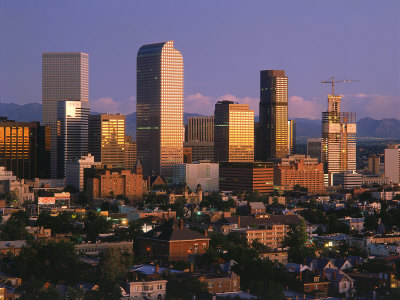
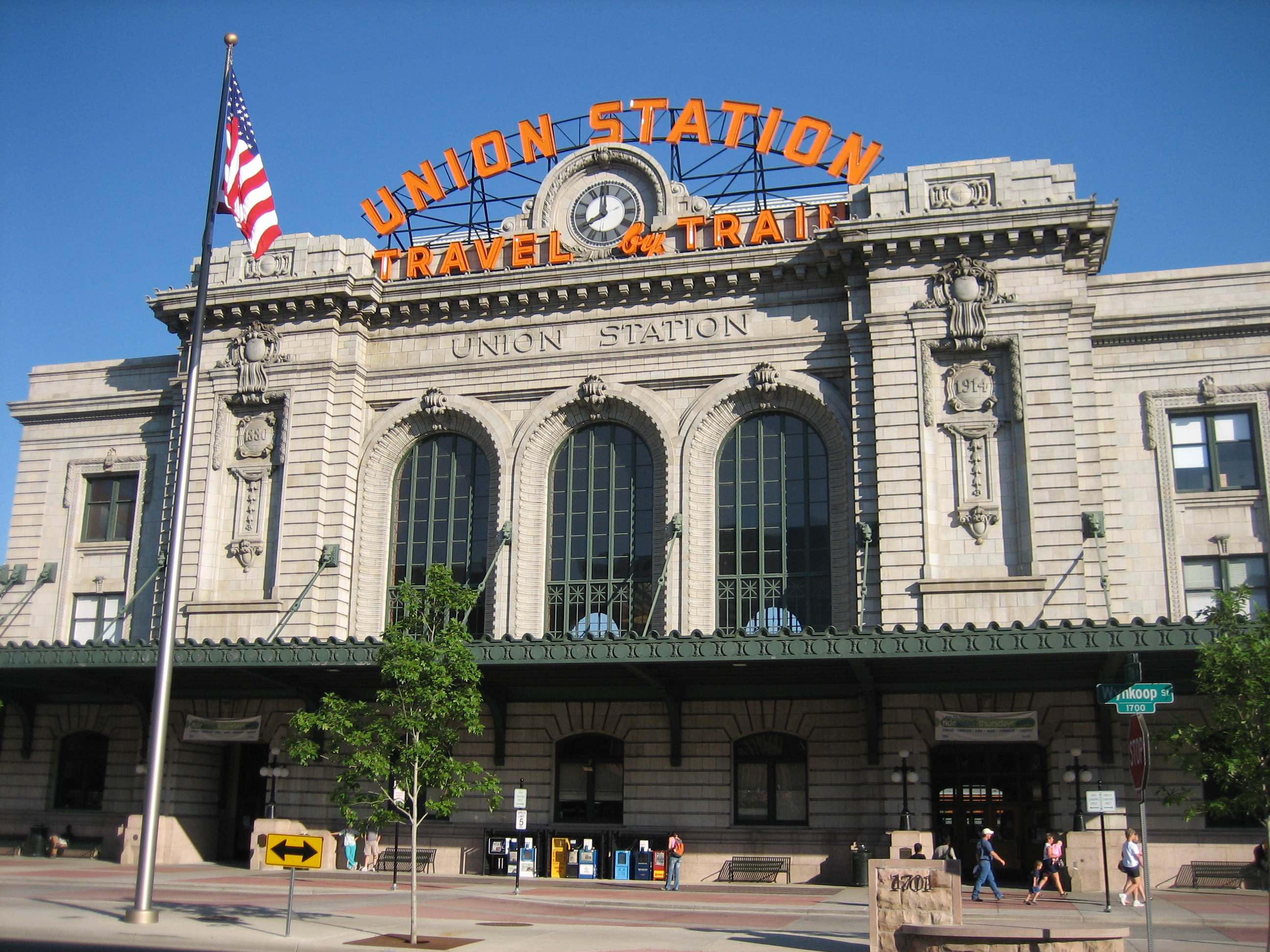









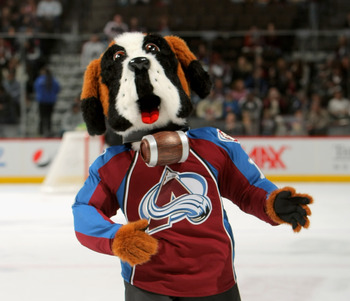
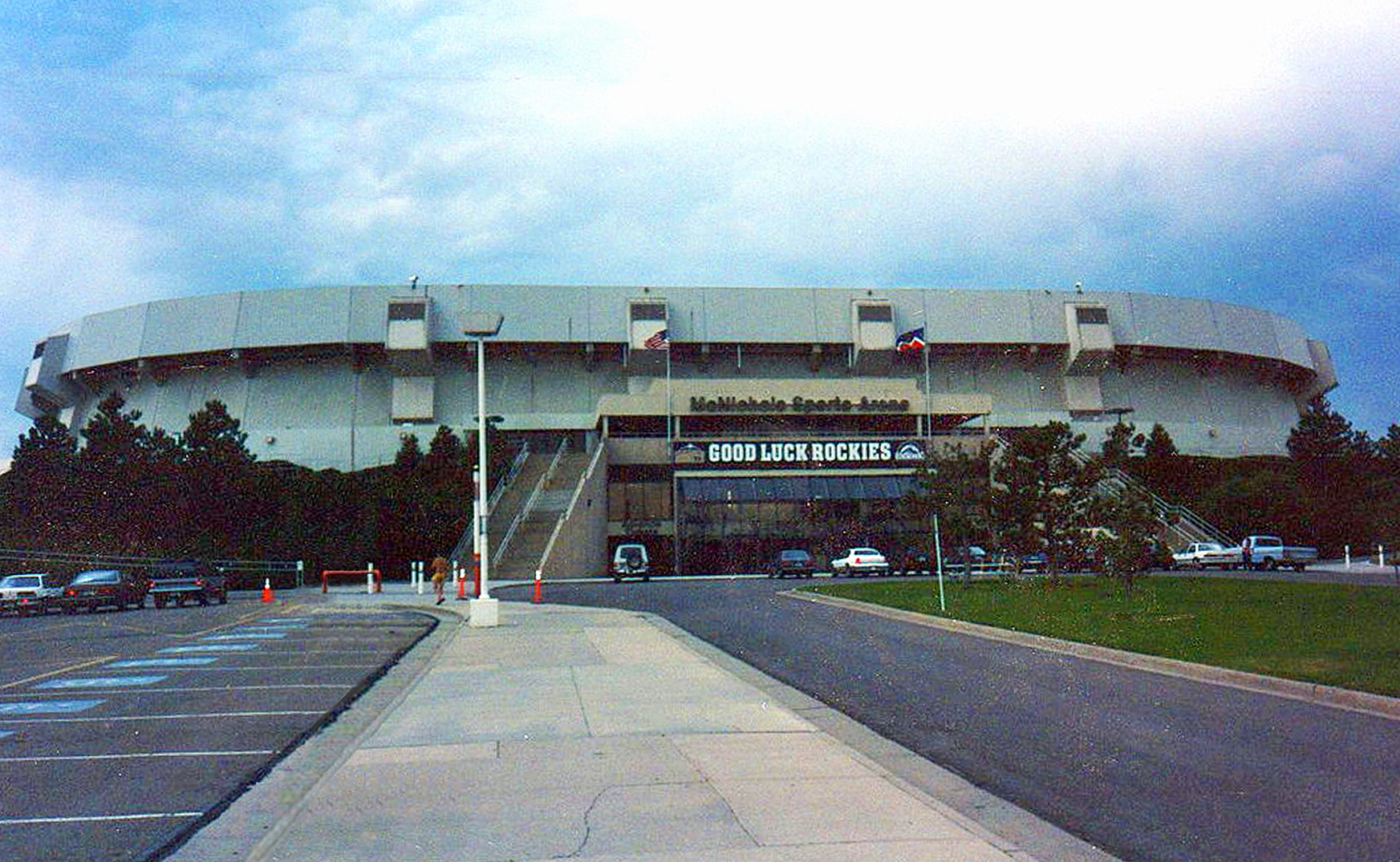






/cdn.vox-cdn.com/uploads/chorus_image/image/56752537/shutterstock_342912272.0.jpg)
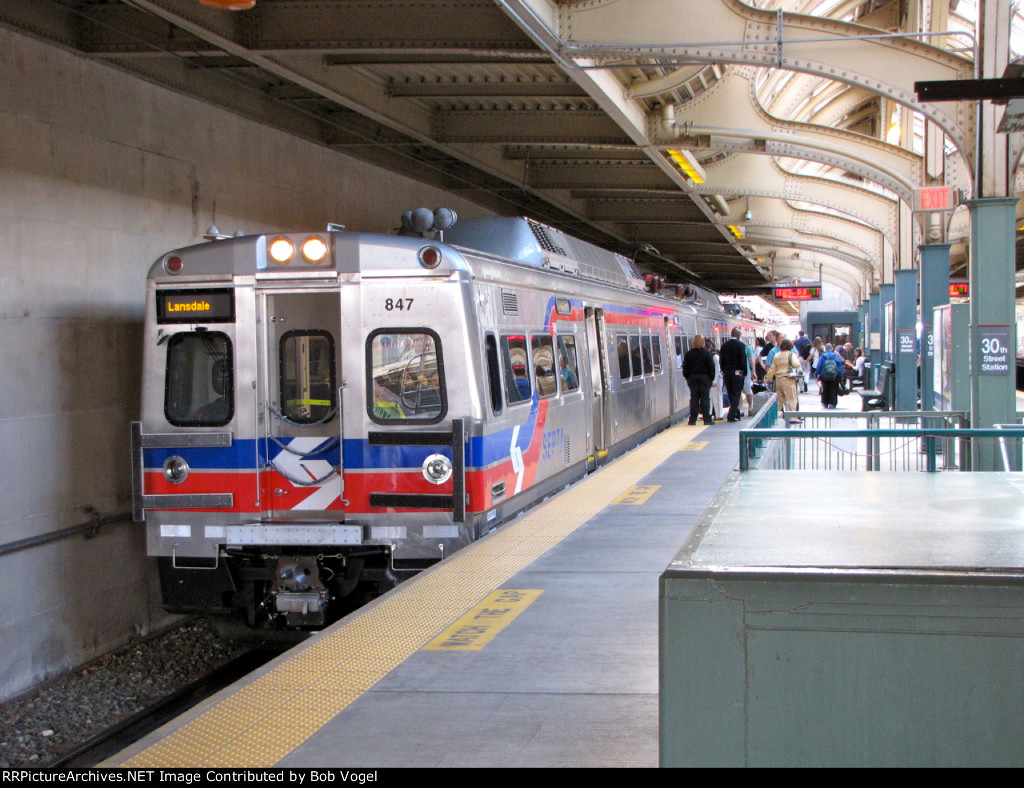




















.jpeg)




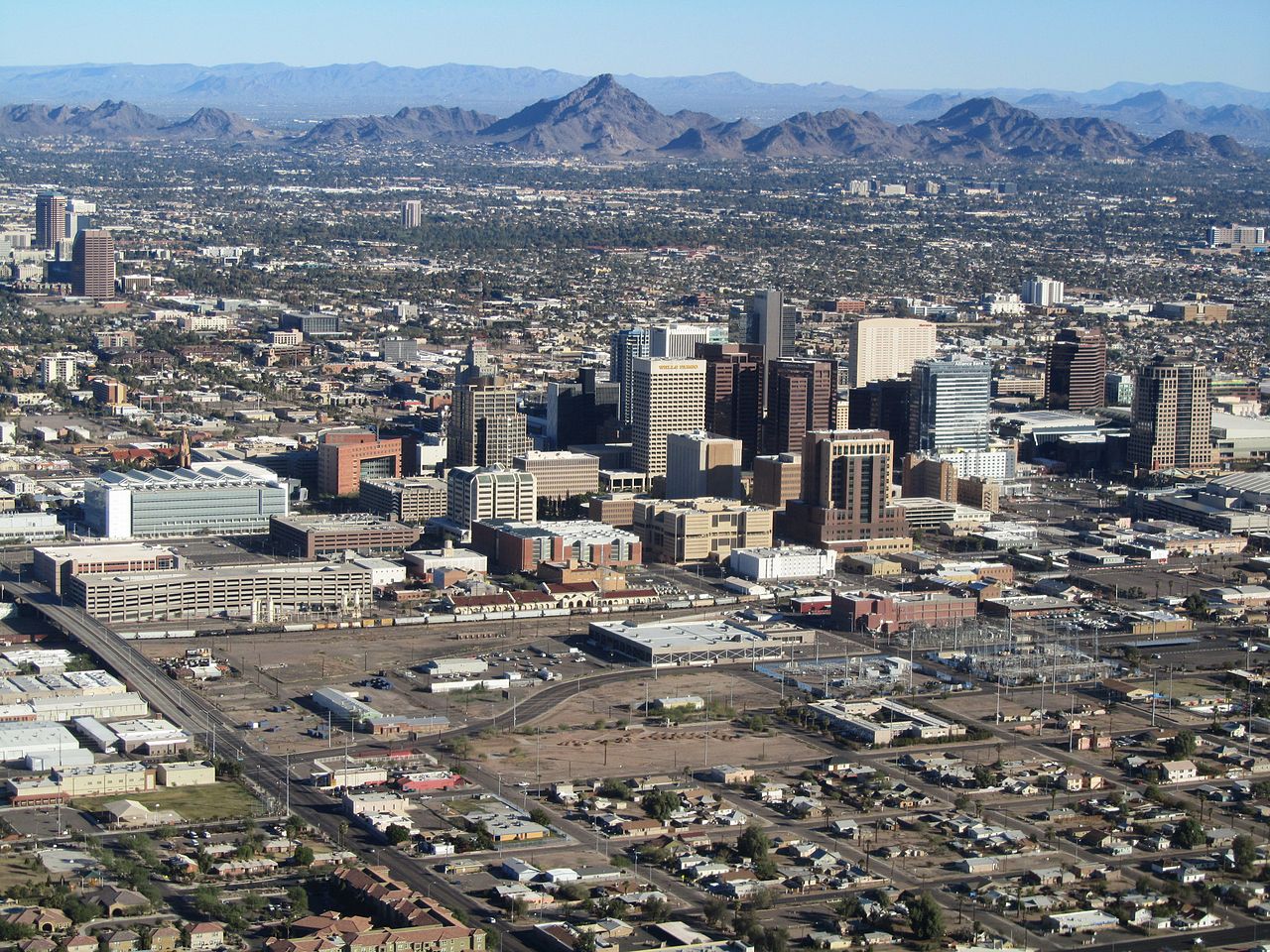

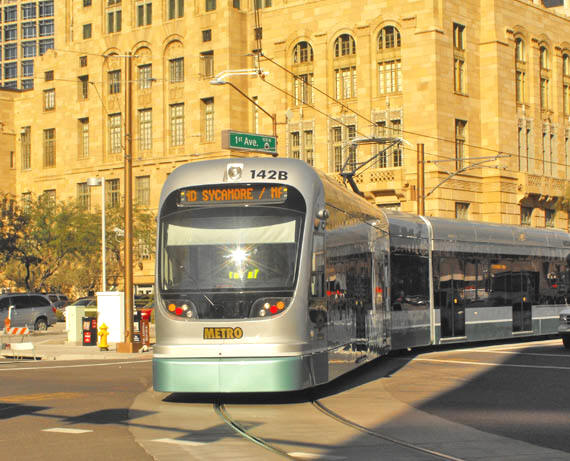
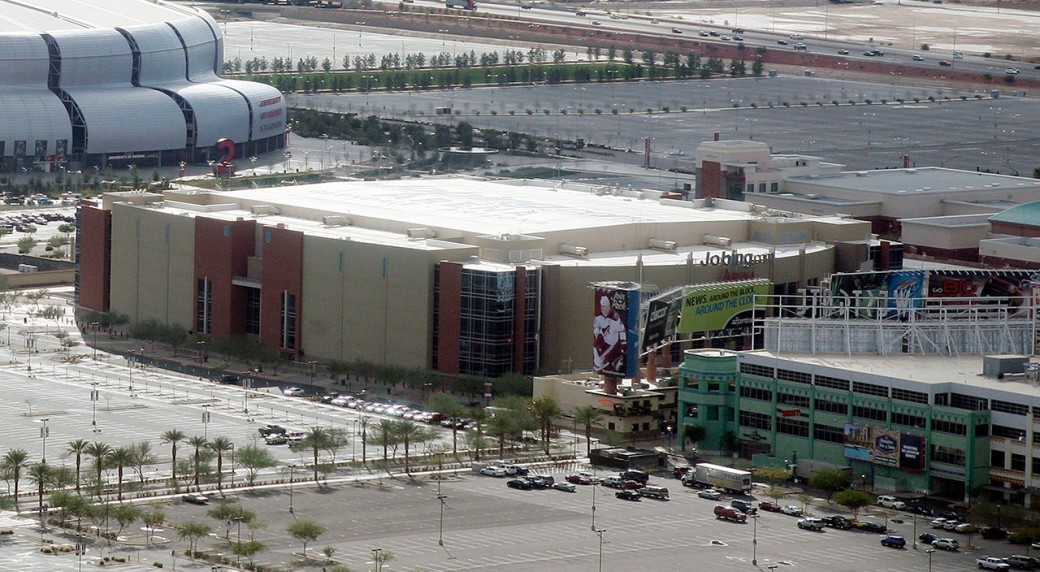






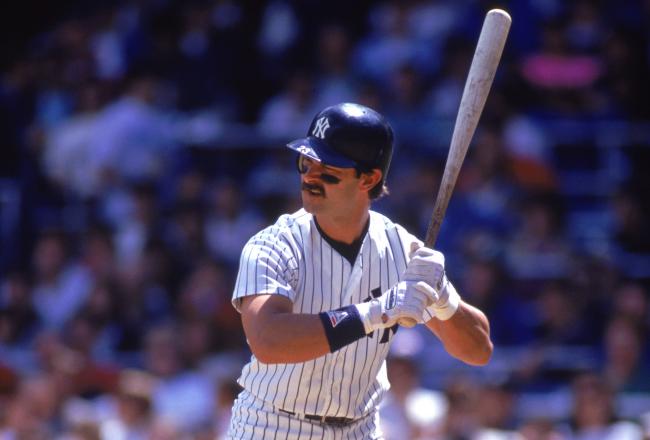





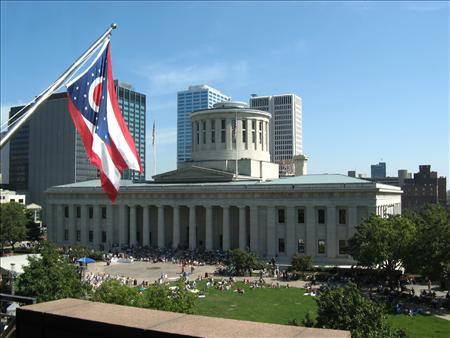



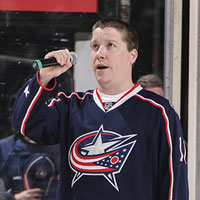


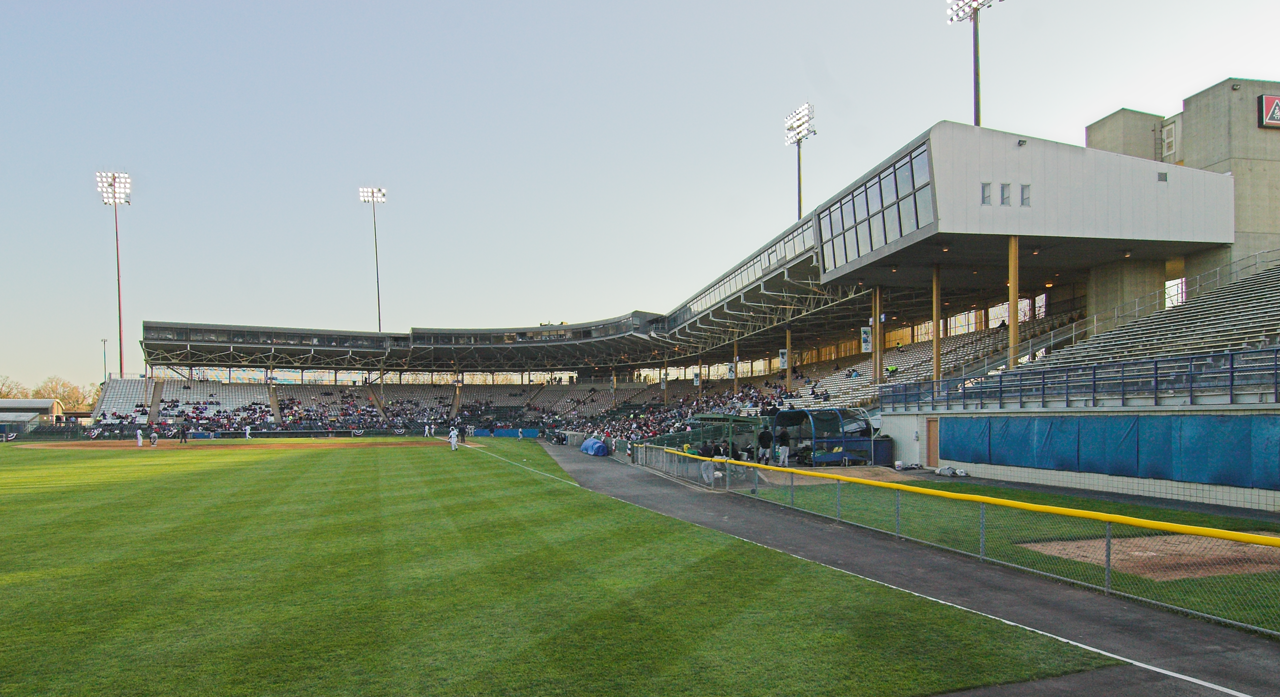

















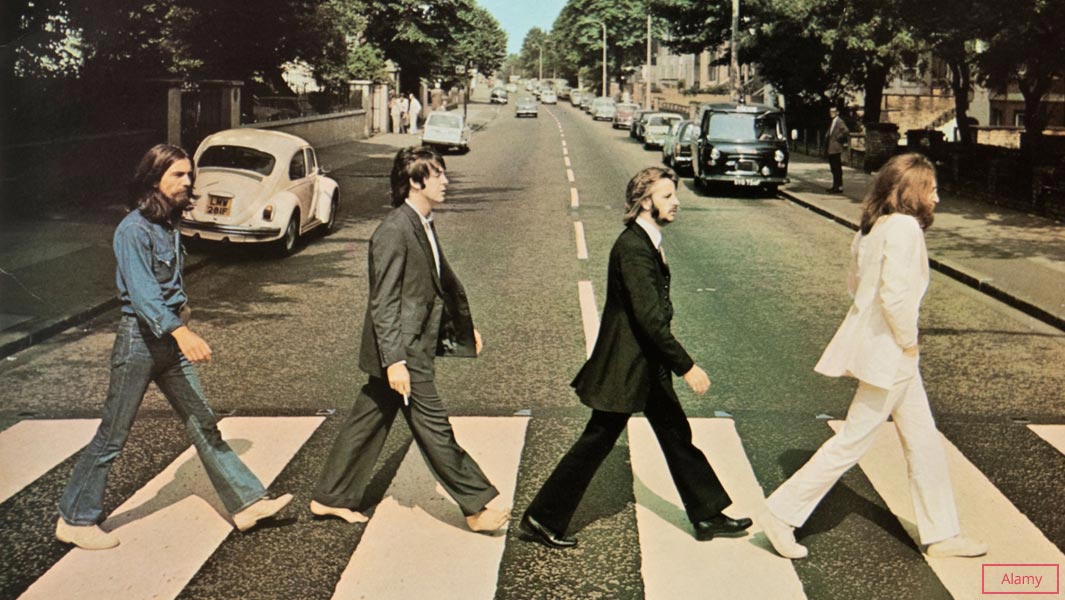




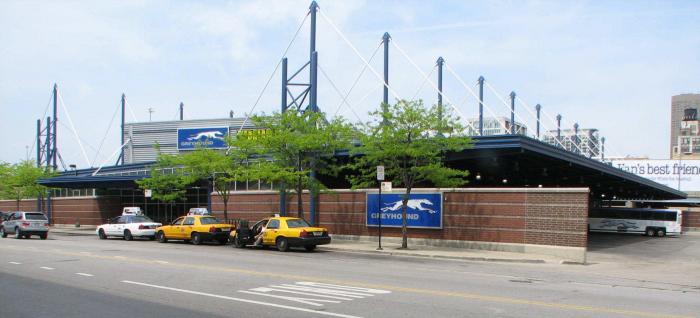



.jpg)

